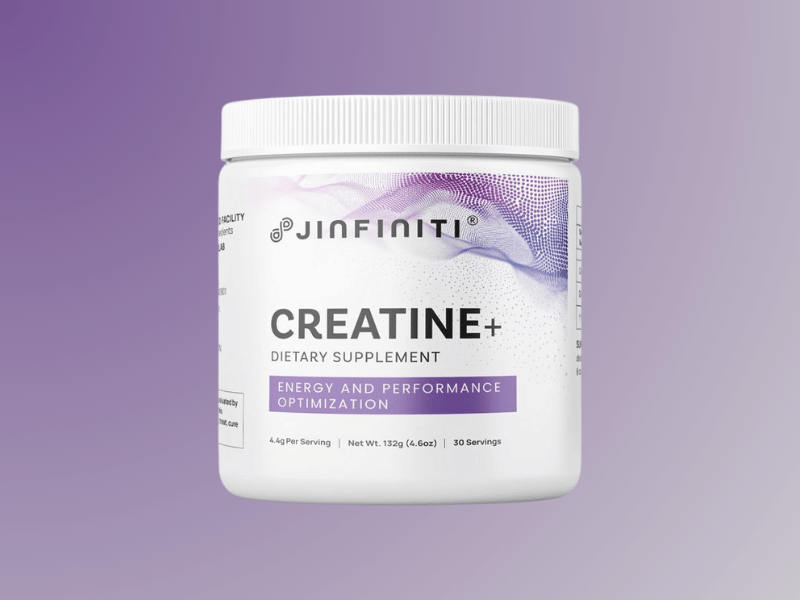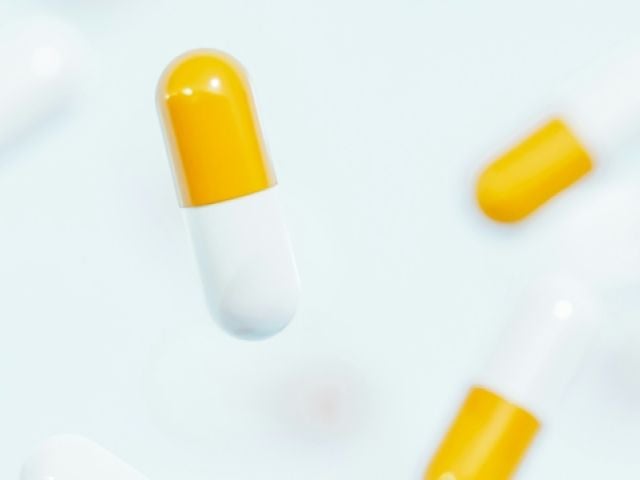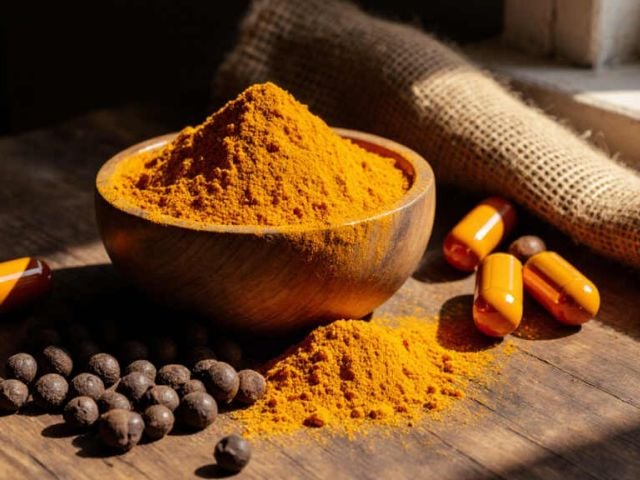
ATP Supplements: Benefits, Dosage and Side Effects
Your cells produce trillions of ATP molecules every day, yet this energy currency can run low when you push your body hard.
Athletes and fitness lovers now turn to ATP supplements to support their training, but the science behind these products raises important questions about how they work and who really benefits.
Quick Takeaways
- ATP supplements at 400 mg daily have been shown to improve maximal strength in resistance-trained individuals by an average of 8 kg compared to placebo.
- Oral ATP supplementation improves blood flow and oxygen delivery to working muscles during and after exercise through vasodilation mechanisms.
- The bioavailability of oral ATP remains debated, with some studies showing ATP itself may not reach circulation but its metabolites might provide benefits.
- Combining ATP with creatine creates a synergistic approach to supporting both immediate and sustained energy production in muscle cells.
What Is ATP?
Adenosine triphosphate (ATP) serves as your body’s primary energy currency at the cellular level. Every movement, thought, and biological process you experience depends on ATP breaking down to release energy.
Your body stores only small amounts of ATP at any given time. This limited supply gets constantly depleted and regenerated through mitochondrial energy production pathways.
How ATP Powers Your Cells
ATP consists of an adenosine molecule bonded to three phosphate groups. When your cells need energy, they break the bond between the second and third phosphate groups, releasing power for biological work.
This breakdown converts ATP into ADP (adenosine diphosphate) and a free phosphate molecule. Your mitochondria then work to reattach that phosphate group, regenerating ATP for continuous use.
During high-intensity exercise, your muscles can deplete ATP faster than your body can regenerate it. This energy deficit contributes to fatigue and reduced performance.
What Are ATP Supplements?
ATP supplementation involves taking adenosine-5′-triphosphate orally to support cellular energy levels during demanding physical activity. These supplements typically contain ATP as a disodium salt in powder or capsule form.
The sports nutrition industry has developed ATP supplements primarily for athletes engaged in resistance training and high-intensity exercise. Most research studies have examined doses around 400 mg taken daily or before training sessions[1].
Different Forms of ATP Supplements
ATP supplements come in several formats designed for different preferences and needs:
- Powder forms allow flexible dosing and mix easily into pre-workout drinks
- Capsules offer convenience and precise measurement for consistent dosing
- Enteric-coated versions protect ATP from stomach acid degradation before reaching the intestines
Disodium ATP is the most studied form in clinical research. This trademarked ingredient appears in many commercial supplements targeting athletic performance.

The Bioavailability Question
The ability of oral ATP to reach your bloodstream remains a contentious topic in sports science. A 2012 study published in the Journal of the International Society of Sports Nutrition found that single doses of oral ATP did not increase plasma ATP concentrations in healthy volunteers[2].
The researchers noted that ATP gets broken down in the digestive system before entering circulation. Yet the same study observed increased uric acid levels, suggesting ATP or its metabolites were absorbed and metabolized.
Other research has shown that chronic ATP supplementation can increase post-exercise ATP levels in blood[3]. This apparent contradiction may reflect differences between acute and chronic dosing protocols[3].
Benefits of ATP Supplements
Research on ATP supplementation shows measurable improvements in strength and blood flow, though results vary based on dosing protocols and training status. The three main benefits appear in strength gains, circulation, and fatigue resistance.
Strength and Power Improvements
A 2024 meta-analysis examining five randomized controlled trials found that oral ATP supplementation produced meaningful gains in maximal strength compared to placebo. The pooled data showed an average improvement of 8.13 kg in strength measures[1].
The same analysis found that 400 mg doses of ATP improved anaerobic exercise performance regardless of whether taken acutely or chronically. These improvements occurred without notable changes in maximum repetitions or anaerobic power output.
A 2017 study in the Journal of the American College of Nutrition demonstrated that two weeks of ATP supplementation prevented declines in muscle excitability during repeated sprint bouts. Peak power increased by 18.3% in later sprint repetitions for the ATP group[3].
| Study | Duration | Dose | Key Finding |
|---|---|---|---|
| González-Marenco et al., 2024 | Varies | 400 mg | +8.13 kg strength improvement |
| Purpura et al., 2017 | 2 weeks | 400 mg | +18.3% peak power in later sprints |
| Rathmacher et al., 2012 | 15 days | 400 mg | Reduced torque fatigue |
Blood Flow and Oxygen Delivery Improvements
One of the most consistent findings in ATP research involves its effects on blood flow. Studies show that oral ATP increases blood flow following exercise in both animal models and humans[4].
ATP works as a signaling molecule by binding to P2Y2 receptors on endothelial cells. This binding triggers vasodilation through nitric oxide and prostacyclin pathways, expanding blood vessels to improve circulation[5].
Improved blood flow delivers more oxygen and nutrients to working muscles while removing metabolic waste products faster. This better circulation may explain why ATP helps reduce fatigue during successive exercise sets.
The vasodilatory effects appear particularly strong during recovery periods. Research in rats showed elevated blood flow persisting 20 to 90 minutes after exercise with ATP supplementation[4].
Reduced Muscle Fatigue During Training
ATP supplementation helps you maintain higher force output as exercise sessions progress. A 2012 study found that 15 days of ATP supplementation improved low peak torque and reduced torque fatigue during repeated high-intensity exercise sets[6].
The fatigue-fighting effects become most apparent in later sets when energy depletion typically hampers performance. Athletes taking ATP maintained stronger contractions through exhaustive exercise compared to placebo groups.
This sustained performance may result from ATP’s dual role as both an energy substrate and a signaling molecule. The improved blood flow works together with better cellular energy availability to support continued muscle function.
How Much ATP Should You Take?

The ideal ATP dose is 400 mg daily based on the most extensive research in athletic populations. Research provides clear guidance based on studies examining strength and performance outcomes.
Recommended ATP Dose Guidelines
The most extensively studied and effective ATP dose is 400 mg daily. Multiple clinical trials have validated this amount for improving strength and reducing fatigue in resistance-trained individuals[1].
Some studies have examined acute doses of 400 mg taken 30 minutes before training sessions. Others investigated chronic supplementation protocols dividing the daily dose into two 200 mg servings.
Higher doses up to 5000 mg have been tested but showed no additional benefits and did not improve bioavailability[2]. Lower doses under 400 mg have produced less consistent results in research settings.
Start with 400 mg daily if you’re new to ATP supplementation. You can take this amount as a single dose or split it between morning and evening.
When Should You Take ATP?
Timing your ATP supplement depends on whether you’re using an acute or chronic protocol. For acute supplementation, take 400 mg approximately 30 minutes before your training session.
This pre-workout timing allows the supplement to be absorbed and begin affecting blood flow and muscle function during exercise. The peak effects on circulation occur during and immediately after physical activity.
For chronic supplementation, consistency matters more than precise timing. Taking 200 mg twice daily maintains steadier levels and has shown benefits in 12-week training studies[7].
Some athletes combine both approaches by taking a daily maintenance dose plus an extra serving before particularly demanding workouts. This strategy hasn’t been formally studied but follows the logic of research protocols.
Are There Side Effects of ATP Supplements?
ATP supplementation appears safe and well-tolerated based on available research. Clinical trials lasting up to 12 weeks found no statistically or clinically meaningful changes in blood chemistry or hematology markers[7].
Most studies report no adverse effects from 400 mg daily doses. Some individuals may experience mild digestive discomfort when first starting supplementation, though this is uncommon.
The lack of reported side effects may relate to ATP being a naturally occurring molecule in your body. Your cells already produce and use ATP constantly, so external supplementation simply adds to existing pools.
You should consult with a healthcare provider before starting ATP supplementation if you have cardiovascular conditions. While ATP’s vasodilatory effects are generally beneficial, those with blood pressure concerns should seek medical guidance.
🫙 MORE SUPPLEMENT GUIDES
- Breathing easier starts with the right support. These supplements for lung and respiratory health can help your airways stay clear and strong.
- Feeling stressed and wired? Research backs these supplements that reduce cortisol levels naturally without harsh side effects.
- Sirtuins control how your cells age. Learn about sirtuin supplements and whether they live up to the longevity hype.
Should You Consider ATP Supplementation?
Resistance-trained individuals performing high-intensity exercise show the clearest benefits from ATP supplementation. Research has focused primarily on people with strength training experience rather than untrained populations[1].
Athletes engaged in sports requiring repeated high-intensity efforts may gain advantages from ATP’s effects on power output and fatigue resistance. This includes sprinters, CrossFit athletes, and team sport players.
You might consider ATP supplementation if you:
- Train with weights regularly and want to improve strength gains
- Perform repeated high-intensity intervals or sprints
- Experience notable fatigue in later training sets
- Want to support recovery between workout sessions
- Engage in sports requiring sustained power output
Those performing primarily endurance exercise at moderate intensities may see fewer benefits. The research has produced mixed results for sustained athletic performance compared to anaerobic activities.
Can You Combine Creatine with ATP?
Pairing ATP with creatine creates a complementary approach to supporting muscle energy systems. These two compounds work through different but related pathways to support performance.
Creatine increases phosphocreatine stores in your muscles, which rapidly regenerates ATP during the first few seconds of intense exercise. ATP supplementation may support sustained energy availability as exercises continue beyond this initial period.
Jinfiniti’s Creatine and ATP supplement combines 4 grams of pure creatine monohydrate with the well-studied 400 mg dose of disodium ATP per serving.
This formulation provides both immediate energy system support through creatine and sustained circulation benefits through ATP.
Creatine also offers brain health benefits beyond physical performance, supporting brain energy metabolism and mental clarity. When combined with ATP’s blood flow effects, you get comprehensive support for both body and mind.
Getting started with creatine supplementation becomes easier when combined with ATP in a single formula. The research shows consistent benefits for strength, power, and muscle growth from creatine, while ATP adds circulation and fatigue-fighting properties.
Bottom Line
ATP supplements are gaining popularity in sports nutrition with growing research support. The evidence shows 400 mg daily can improve strength gains and reduce fatigue in resistance-trained individuals, primarily through improved blood flow and energy signaling rather than direct ATP delivery to muscles.
The combination of creatine and ATP offers a science-backed approach to supporting your training adaptations. Whether you choose standalone ATP supplementation or a combined formula, consistent dosing matters more than perfect timing for seeing results.
Referenced Sources
- González-Marenco R, Estrada-Sánchez IA, Medina-Escobedo M, Chim-Aké R, Lugo R. The Effect of Oral Adenosine Triphosphate (ATP) Supplementation on Anaerobic Exercise in Healthy Resistance-Trained Individuals: A Systematic Review and Meta-Analysis. MDPI AG; 2024. https://doi.org/10.3390/sports12030082
- Arts IC, Coolen EJ, Bours MJ, Huyghebaert N, Stuart MAC, Bast A, et al. Adenosine 5′-triphosphate (ATP) supplements are not orally bioavailable: a randomized, placebo-controlled cross-over trial in healthy humans. Informa UK Limited; 2012. https://doi.org/10.1186/1550-2783-9-16
- Purpura M, Rathmacher JA, Sharp MH, Lowery RP, Shields KA, Partl JM, et al. Oral Adenosine-5′-triphosphate (ATP) Administration Increases Postexercise ATP Levels, Muscle Excitability, and Athletic Performance Following a Repeated Sprint Bout. Informa UK Limited; 2017. https://doi.org/10.1080/07315724.2016.1246989
- Jäger R, Roberts MD, Lowery RP, Joy JM, Cruthirds CL, Lockwood CM, et al. Oral adenosine-5’-triphosphate (ATP) administration increases blood flow following exercise in animals and humans. Informa UK Limited; 2014. https://doi.org/10.1186/1550-2783-11-28
- Nyberg M, Al-Khazraji BK, Mortensen SP, Jackson DN, Ellis CG, Hellsten Y. Effect of extraluminal ATP application on vascular tone and blood flow in skeletal muscle: implications for exercise hyperemia. American Physiological Society; 2013. https://doi.org/10.1152/ajpregu.00189.2013
- Rathmacher JA, Fuller JC, Baier SM, Abumrad NN, Angus HF, Sharp RL. Adenosine-5’-triphosphate (ATP) supplementation improves low peak muscle torque and torque fatigue during repeated high intensity exercise sets. Informa UK Limited; 2012. https://doi.org/10.1186/1550-2783-9-48
- Wilson JM, Joy JM, Lowery RP, Roberts MD, Lockwood CM, Manninen AH, et al. Effects of oral adenosine-5′-triphosphate supplementation on athletic performance, skeletal muscle hypertrophy and recovery in resistance-trained men. Springer Science and Business Media LLC; 2013. https://doi.org/10.1186/1743-7075-10-57

Get weekly health insights and exclusive offers by joining our newsletter.










